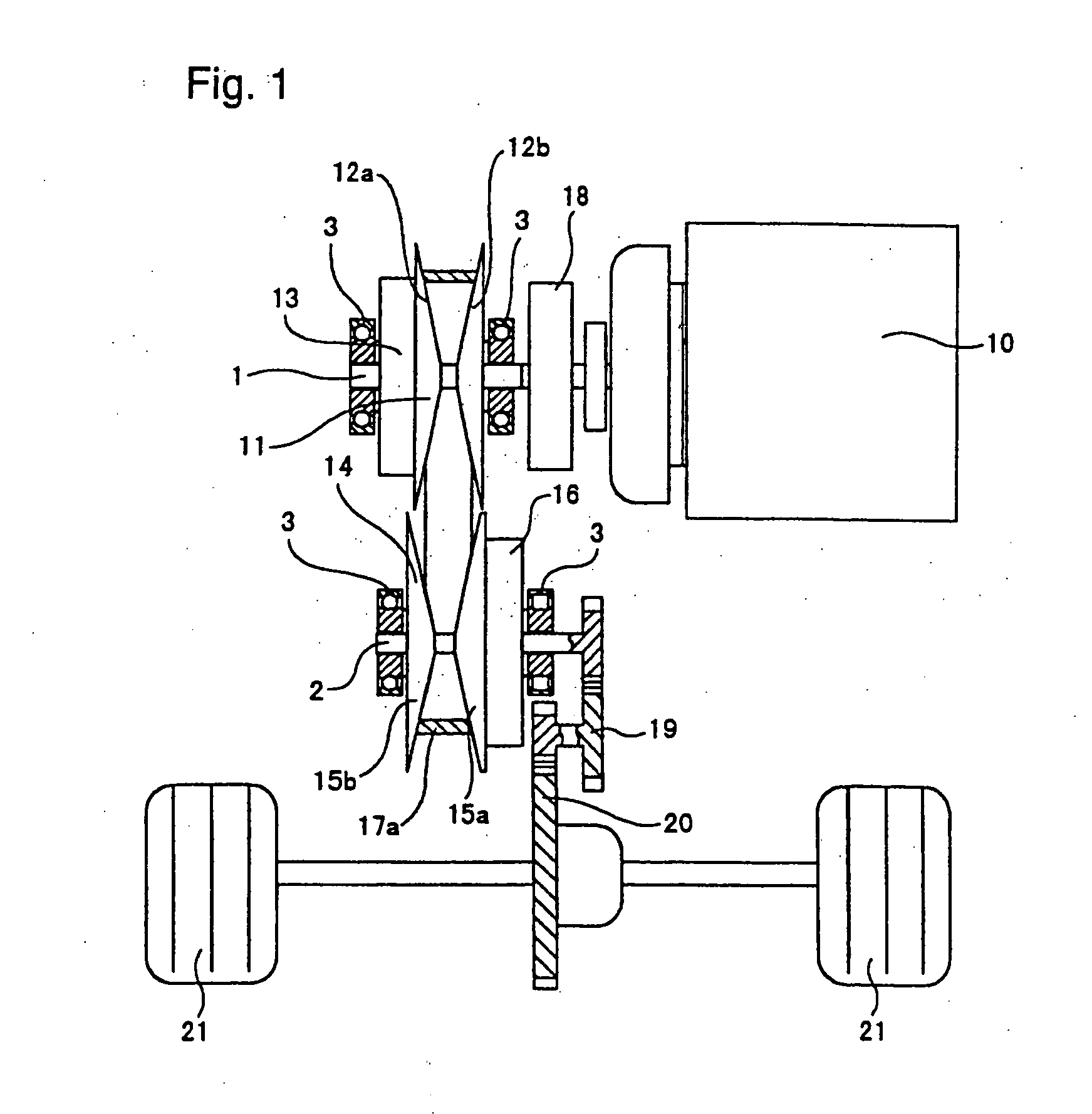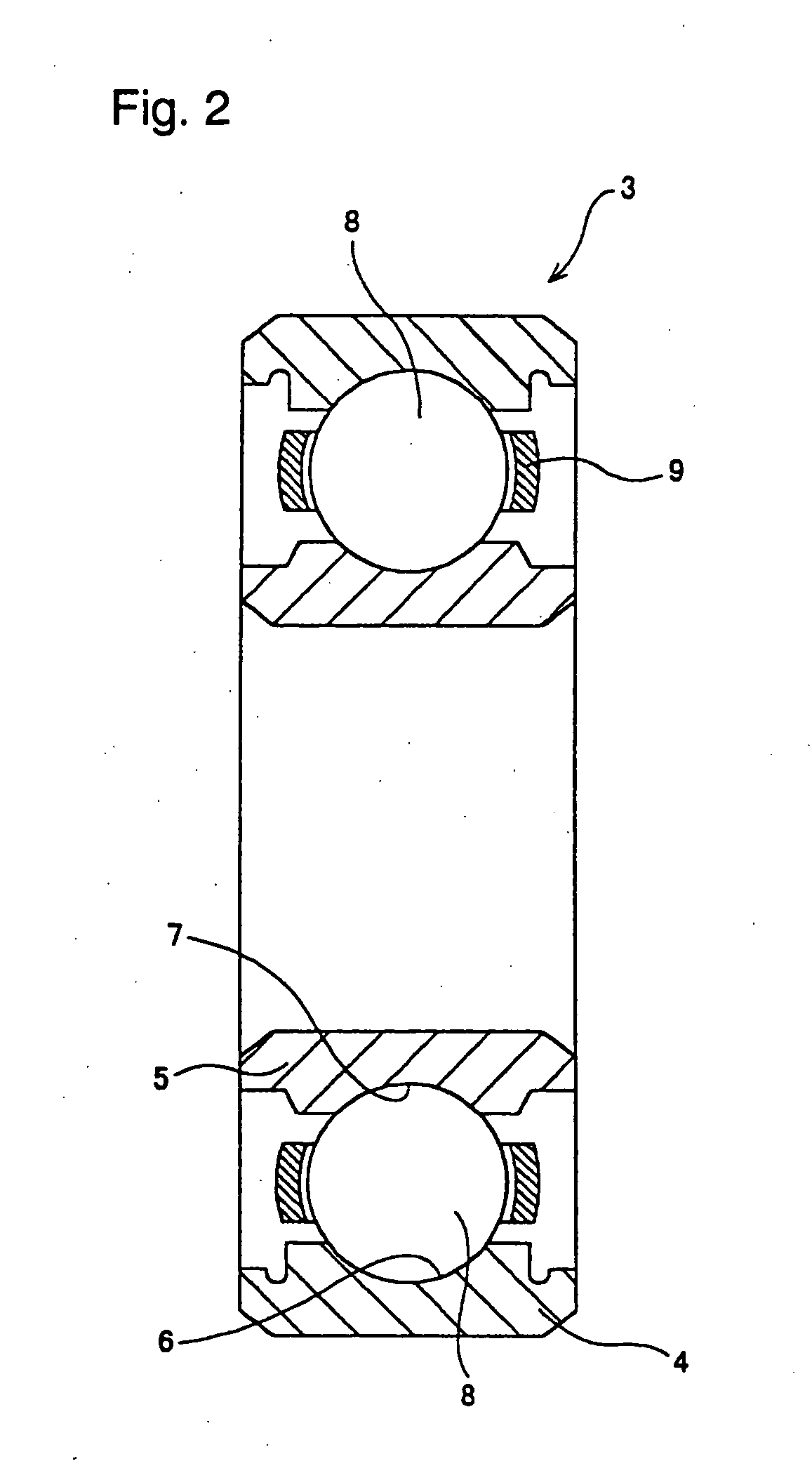Rolling bearing for a belt-type continuously variable transmission
a continuously variable transmission and bearing technology, applied in the direction of gearing, furnaces, hoisting equipment, etc., can solve the problems of reducing the durability of the bearing, increasing the frequency of resonance with the belt, and increasing the frequency of belt resonan
- Summary
- Abstract
- Description
- Claims
- Application Information
AI Technical Summary
Benefits of technology
Problems solved by technology
Method used
Image
Examples
examples
[0093] Next, tests that were performed for confirming the effect of the invention will be explained. As shown in Table 1 below, in the tests, ten kinds of test samples that were within the technical range of the present invention (examples 1 to 10), and eight kinds of test samples that were outside of the technical range of this invention (comparison examples 1 to 8), for a total of 18 kinds of test samples were prepared, and after the heat treatment shown in Table 1 was performed, the durability of each sample (level of fatigue and life L10) was measured.
TABLE 1SurfaceHeathardness.RδRfatiguelifeCSiMnCrSurface CSurface Ntreatment(Hv)(%)(MPa)levelL10(hour)Ex10.320.770.601.001.000.05.780352251.41500 .20.250.100.703.000.890.14.835252001.51500 .30.400.210.11.041.080.05.850402501.31500 .40.150.300.780.980.800.09.720201501.8101550.391.50.650.500.980.15.865303051.21500 .60.170.281.51.000.850.11.750201701.7110070.500.150.670.971.200.14.900455001.21500 .80.321.200.831.051.150.09.830403551....
PUM
| Property | Measurement | Unit |
|---|---|---|
| Length | aaaaa | aaaaa |
| Fraction | aaaaa | aaaaa |
| Fraction | aaaaa | aaaaa |
Abstract
Description
Claims
Application Information
 Login to View More
Login to View More - R&D
- Intellectual Property
- Life Sciences
- Materials
- Tech Scout
- Unparalleled Data Quality
- Higher Quality Content
- 60% Fewer Hallucinations
Browse by: Latest US Patents, China's latest patents, Technical Efficacy Thesaurus, Application Domain, Technology Topic, Popular Technical Reports.
© 2025 PatSnap. All rights reserved.Legal|Privacy policy|Modern Slavery Act Transparency Statement|Sitemap|About US| Contact US: help@patsnap.com



